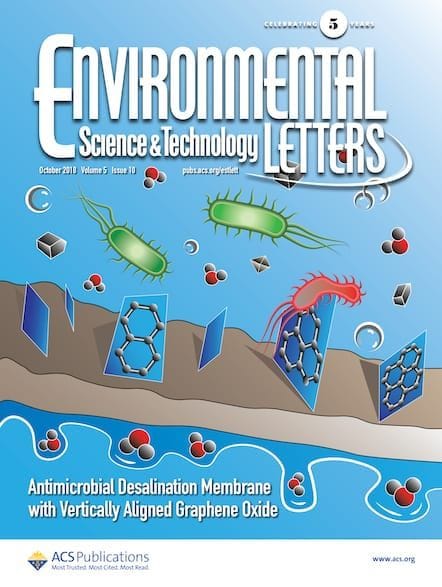Airborne microplastics can travel long distances and undergo several cloud processes through atmospheric transport. Until now, little has been known about the interactions between microplastics and clouds, but new research aims to change that.

More than 3 million metric tons of microplastics enter the environment every year and find their way into our drinking water. It’s perhaps not surprising then to discover that microplastics are firmly embedded now in the water cycle—with new evidence recording them in clouds.
Xinmiao Xu and colleagues collected cloudwater samples from Mt. Tai in eastern China, and they found an average microplastic concentration of 463 MP L–1 , with size ranging from 8–1542 μm—although 60% were smaller than 100 μm and tended to be darker colors. They reported in Environmental Science & Technology Letters that upon further analysis, the concentrations were influenced by cloud liquid water content, source regions, and trajectory height, while the shapes and sizes appeared to be associated with long-range transport or localized sources.1
The team observed a tendency for the microplastics to have roughened surfaces, which indicates photochemical aging and likely increases their capability to hold on to toxic metals—not great news for their eventual fall to earth and back into the water cycle. Their predominance in clouds also highlights how microplastics are falling to earth and accumulating even in remote areas, such as mountainous lakes and glaciers.2

Focusing on Microplastics: Can We Cut Them Out?
Another paper published in 2023 in Environmental Science & Technology reported detecting microplastics in 100% of rainfall samples from Beijing's atmosphere.3 Interestingly, microplastic abundance was tentatively linked to rainfall intensity, and the various microplastic communities differed among rainfalls, suggesting atmospheric transport is highly dynamic. The deposited microplastics were unstable and highly fragmented. Although precipitation therefore appears to be an effective mechanism for removing airborne microplastics, they then enter urban soils and waters, from where they can either infiltrate the food chain or move back into the clouds.
A crucial final consideration is that the interaction between microplastics and clouds will be bidirectional. Clouds will affect the material properties of the plastics, but the plastics will also change key elements of cloud chemistry. Much is still to be found out, but some predict that microplastics will interfere with the normal interactions between radiation and aerosols and could perhaps serve as cloud condensation nuclei and ice-nucleating particles.4
More research is needed to understand how microplastics interact with clouds, and the potential impact on rainwater, atmospheric metal cycles, and cloud formation. But given their ubiquitous presence in the air, there is an urgent need for better understanding of the potential hazards of microplastics to human health.
For more reading, and a great review of the direct exposure to microplastics in human food and water, click here.5
References
- Xu, X. et al. Characterization of Microplastics in Clouds over Eastern China. Environ. Sci. Technol. Lett. 2024, 11, 1, 16–22.
- Dong, H. et al. Microplastics in a Remote Lake Basin of the Tibetan Plateau: Impacts of Atmospheric Transport and Glacial Melting. Environ. Sci. Technol. 2021, 55, 19, 12951–12960.
- Chen, Y. et al. Wet Deposition of Globally Transportable Microplastics (<25 μm) Hovering over the Megacity of Beijing. Environ. Sci. Technol. 2023, 57, 30, 11152–11162.
- Ganguly, M. and Ariya, P. A. Ice Nucleation of Model Nanoplastics and Microplastics: A Novel Synthetic Protocol and the Influence of Particle Capping at Diverse Atmospheric Environments. ACS Earth Space Chem. 2019, 3 (9), 1729–1739.
- Zhang, Q. et al. A Review of Microplastics in Table Salt, Drinking Water, and Air: Direct Human Exposure. Environ. Sci. Technol. 2020, 54, 7, 3740–3751.
